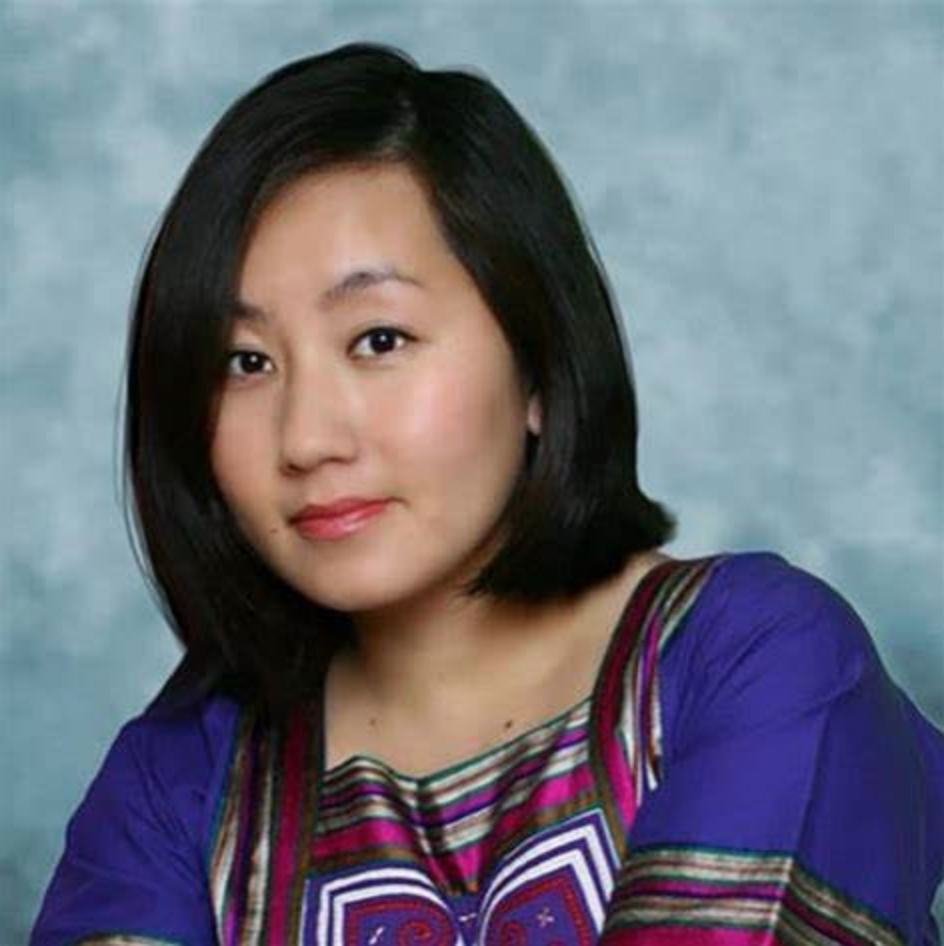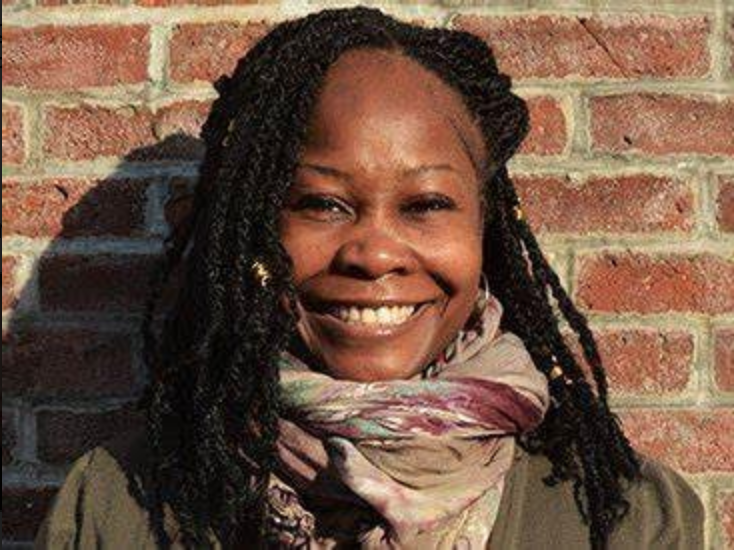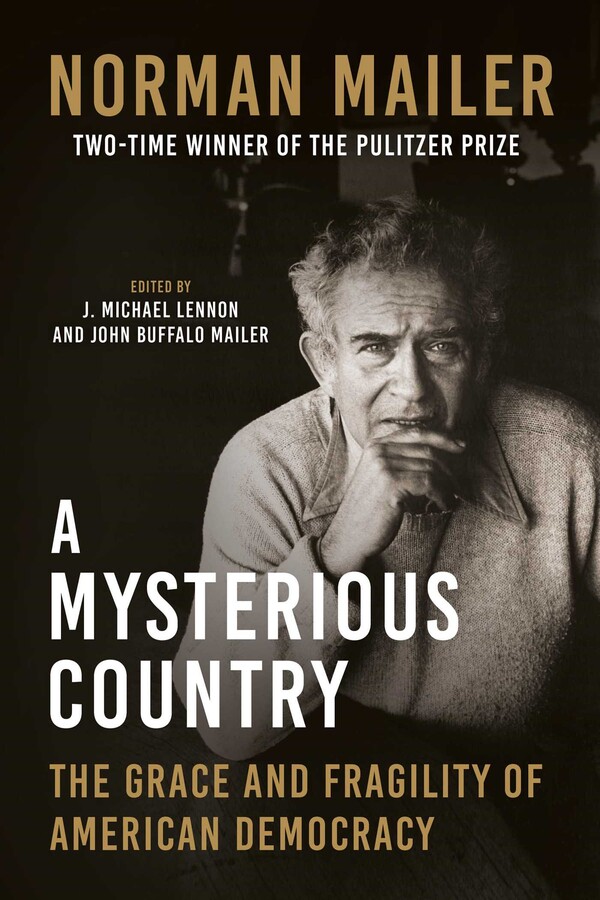Season’s greetings!
December is here, and so is the year’s end. For students and faculty, this means wrapping up semester obligations and preparing for a January residency – the first in-person winter residency for many of us. We’re all adjusting to the added hours of darkness as winter solstice passes, hopefully bolstered by the planning of personal and family traditions during the holidays and the turn of the new year.
However you spend 2022’s final weeks, consider the rare, strong community you’ve built here. I know that one of the greatest lights of my year has been this program and its constant push for my growth, not only as a writer but as a human being. That’s something worth celebrating.
Cheers, & Happy New Year!
Hallie O’Neill, MFA ‘23
MASLOW FAMILY GRADUATE PROGRAM IN CREATIVE WRITING UPDATES
1. Remote Residency?
We’re working on providing our middle cohorts (CW 510, 516, and 525) with the opportunity to attend a remote residency in lieu of our in-person residency. Stay tuned for an update at the winter residency!
2. Introducing Our Newest Faculty Mentors
As our program grows, so does our All-Star faculty. The latest to join our ranks are memoirist/fictionista/children’s author Kao Kalia Yang (https://kaokaliayang.com/), poet Shanta Lee (https://www.shantalee.com/), and sci-fi writer Ken Liu (https://kenliu.name/).



3. The Latest Tracks
The Spring 2023 term marks the first one with an MA student studying Spoken Word under the guidance of our Spoken Word faculty mentor, Angelique Palmer (https://www.angeliquepalmerpoems.com/video). Coming soon: Writing for Television!
FROM CORPORATE DIVERSITY OFFICER TO FULL-TIME NOVELIST: NISHA SHARMA ON MAKING THE PROFESSIONAL LEAP

Program alum and faculty mentor Nisha Sharma recently made a big professional leap: she quit her established career as a chief diversity officer for a global tech company to be a full-time novelist.
This “leap” wasn’t spur of the moment or on a whim by any means; Sharma had planned for this switch for years, perhaps dating all the way back to when, at nineteen, she first decided she wanted to be a working writer. Since then, she’s taken strategically planned steps to solidify her ability to sustain herself as a full-time creative.
After graduating from law school, a career decision she made based on a number of nuanced cultural and personal reasons, she created her game plan to secure an agent, publishing deals, and diversify her income through teaching and consulting. At the time, she was essentially working two full-time jobs: writing and working in corporate. The bulk of her weekends were dedicated to her craft, but during the weekdays, she committed to the “John Grisham method”: writing on her commute into New York City, and editing the morning’s work on her commute home. After finishing her first novel prior to starting at Wilkes, she queried extensively and was able to land her first agent.
“I firmly believe that writing is about passion, about creating something that is completely void of influence from the market and publishing,” Sharma said. “But the minute you decide that you want to sell your book to a publisher, you enter a business, which means you have to start looking at your stories as a product in a larger market. I knew I had a good product when I landed my agent, but I also knew that leaving my job before I even sold my product wasn’t a smart business move.”
After signing with an agent, landing a book deal with Harlequin that fell through, and completing an MFA from Wilkes, Sharma sold My So-Called Bollywood Life, a young adult romance she had written as her MA thesis. After this point, her writing career started to gain some momentum, and after many more years of patience, hard work, and strategic planning, she got to a place where she could comfortably make the switch.
When asked what went into her strategic plan, Sharma shared her approach.
- Assess your resources and your debt. Sharma knows that everyone’s level of privilege is different, so you should ask yourself the following questions: how much debt do you have? How long will it take to pay off that debt? What savings do you have? Have you sold any creative pieces that will result in guaranteed income? Selling one book or play or poetry anthology, Sharma noted, may only earn so much and last for so long.
- Create a debt repayment plan if you need to, whether it be a mortgage, a car payment, student loans, or other. You want to make sure you can manage your debt after you make the transition. Sharma and her husband made the decision to sell their home in New Jersey and move closer to family in Pennsylvania to decrease their living expenses for long-term savings. “This, of course, is not something that is feasible for everyone to do, but think about changes that are sustainable and effective for long-term success. I’ve also changed jobs to make more money or used my degree to offer consulting services when feasible,” said Sharma.
- Create a short-term saving strategy. How much are your monthly payments for bills, living expenses, and any residual long-term debt? The amount differs for everyone, but Sharma knew she wanted to save about 8-10 months of living expenses, and she didn’t want to sacrifice the lifestyle she had before writing full-time. She strategically calculated what she and her husband needed to make in order to keep living as they do.
- Set an end date. Once Sharma was able to manage debt and create a short-term savings plan, she set a date when she would leave her full-time corporate job. That time limit also gave her an understanding of when she had to incorporate her business, speak with her accountant, ensure that her agents were aware of her move, and when she would have to create new routines and plans for sustainable success.
Now, she’s been devoted to the writing and publishing life for just over three months. She mimics the same schedule she had when she worked in corporate jobs, maintaining focus through productivity apps and tools she found through research.
“I’m developing new habits and routines that align with my dream career and aspirations, but they support only one rule: protect your genius,” said Sharma. “A writer’s genius is the stories they create, which means that most of my time has to be about writing some of the best fiction I can. Everything else has to come second to that.”
Sharma has multiple recent or forthcoming projects, including a queer holiday novella called A Singh Family Christmas. Her much-anticipated YA romance, The Karma Map, is set to release in March 2023, and the follow-up to her breakout adult rom com Dating Dr. Dil, Tastes Like Shakkar, will be published in August 2023. You can follow her publishing news and updates on her Substack at nishawrites.substack.com.
THE WRITE LIFE: PROGRAM ALUM PUBLISHES SHORT PLAY COLLECTION
Head over to the Write Life to read reflections from program alum Matthew Hinton, who recently published his collection of short plays, Playroom, an idea ten years in the making that was born right in Wilkes-Barre.

It has been a long journey from my days as a graduate student in the program to publishing Playroom.
Back then, I worked for Mike Lennon on research for the official Mailer biography (A Double Life) and carved out time to launch the initial installments of The Write Life. (If you go back far enough in the archives, you’ll find a trove of reflections on what I was doing in those heady days. Like myself, the blog has come a long way, and both of us – I think – for the better.) Back then, I was ensconced in the Mailer Room of the library; today, I spend my days at Misericordia University (Dallas, PA) running the Writing Center and teaching the occasional course in drama, imaginative writing, or American literature.
Despite the hustle of higher education (and maybe even because of it) the number of writing endeavors I take on multiplies by the microsecond – in my practice of the “spooky art” I drop my bucket where I stand and find it overflowing with opportunities. . . . READ MORE
HAPPY 100TH BIRTHDAY, NORMAN MAILER: IN CONVERSATION WITH J. MICHAEL LENNON
January 31 marks Norman Mailer’s 100th birthday and the much-anticipated release of J. Michael Lennon’s newest project, A Mysterious Country: The Grace and Fragility of American Democracy, a 68-piece collection of Mailer’s work Lennon compiled alongside Mailer’s son, John Buffalo Mailer. A Mysterious Country is the product of a deep-dive into the Mailer archives, from which Lennon and Mailer unearthed sidelined material in the form of profiles, interviews, essays, and articles.
This project closely follows the recent release of Lennon’s memoir, Mailer’s Last Days: New and Selected Remembrances of a Life in Literature, which was just published by Etruscan Press in November of 2022 (see Vicki Mayk’s interview of Lennon about this project for Hippocampus Magazine). Though both hinging on the life of Norman Mailer, this new project demonstrates Lennon’s continued pursuit of extracting Mailer’s insights on American democracy and society.

HALLIE O’NEILL: You recently published a memoir with Etruscan, Mailer’s Last Days: New and Selected Remembrances of a Life in Literature, congratulations! How do these two projects relate to or converse with each other?
J. MICHAEL LENNON: They reverberate with each other. Mysterious Country is a collection of 68 different excerpts from Mailer’s work covering a period from the second World War up to the year of his death in 2007. All of those excerpts have something to say about the nature of the American democracy project – what it’s based on and how it’s always in peril, always troubled, always open to attacks. It’s pretty harrowing.
The memoir is really the story of how I became involved with Mailer. It goes back to my early life before I met Mailer, and how, when I was a young man in the U.S. Navy, I started reading him. The book that really made me a Mailer fan wasn’t his first famous novel, The Naked and the Dead, as much as I like that book. It was a book that he wrote right at that time in the 60s when I was still in the service, and it was called The Armies of the Night. In fact, the title of the book comes from The Armies of the Night. In writing about the March on the Pentagon, he was taken by the fact that here we were in this country, and we still had the right to peacefully protest. He said, “What a mysterious country this is, that it can be so divided and yet people can speak out on both sides.” And that’s what struck me when I read it; that’s one of the reasons I like the book so much. My own life and the protests that I was involved in, and my decision to write my doctoral thesis on Mailer, in many ways stemmed from that book, which is kind of the centerpiece of A Mysterious Country.
O’NEILL: This book will be released on Mailer’s 100th birthday. What else makes this release special or notable?
LENNON: Well, going back to 2015-16 when Trump began his campaign for president, I can’t tell you the number of people who said, “I wish Norman were alive today to write about Donald Trump.” And to analyze him, and to puncture his pomposity. To see the void or vacancy within and to see that it’s all huff and puff. We had symposiums on this in the Norman Mailer Society, back to even before Trump got elected. And since that time, a number of people have written essays and articles calling up the ghost of Norman Mailer to tell us what went wrong and what we should do about it in this country to preserve democracy. David Denby of the New Yorker wrote a long piece for Harper’s which he begins by quoting The Armies of the Night, saying, “Mailer saw this coming.” Mailer had a great antenna, great radar for what was happening in the country, and he saw it. So it was, in a way, almost kind of inevitable that we were going to come up with this book. His son and myself began talking about it, saying “Look, people aren’t seeing the whole picture.” He wrote The Armies of the Night but he wrote a lot of other things as well. So, why don’t we just scour everything that he wrote and look for essays, and profiles of presidents – we said, why don’t we get these documents together in one place and put them out.
O’NEILL: The description on the publisher’s website notes, “American democracy was a lifelong project for Norman Mailer. It was his grand theme.” What other thematic elements are at play in this collection, if any?
LENNON: Mailer believed that the central problem confronting America was race relations. And until that was resolved, the country was always going to be in some kind of a conflict. Related to that, of course, is immigration. So, immigration and race relations and the fights that have been going on in America basically since it was founded are still continuing in this country, and he felt that the struggles going on between left and right were basically a result of those issues.
Another issue that is addressed in the book is the issue of American corporations and their incredible power. And he was writing this before the rise of social media, before Amazon had its power, and Google, and Apple, and all the billionaires and multi-billionaires of the country. Mailer was very concerned about the power of the corporation, and he wrote about it at great length. He said it was unfair, it produces conformity, it’s leveling, and it’s destructive to the small business owners in this country. This country is built on small businesses, and he had great pride and belief in them, whereas the corporation just gobbles them up and snuffs them out. And the gap between what the owners of corporations are paid and the poor wages that the workers are paid at many of them – he felt this was a bad thing for the country. It wasn’t good for democracy. So race relations, corporations, immigration, the glut of advertising in this country, he attacks that as well. He said we should be putting our money into the quality of products rather than spending most of the money on advertising.
He also talks a lot about what happened in Germany in the 1930s. His mother was born in Lithuania. She came to this country as a three-year old, and all through the 1930s, she was very much aware of Adolf Hitler, and the fact that he was persecuting the Jews, which was not universally recognized then. In that decade, there was an America First movement, which used the same language being used now by the followers of Donald Trump. She was very worried and afraid of Hitler, and Mailer was 9 or 10 years old at the time and he never forgot it. So remembering the past and free speech, those are other themes in the book.
O’NEILL: As Mailer’s biographer, you spent much of your time in his company and with his work. With each new project you embark on that involves Mailer, what new insights about his life and work do you uncover, if any?
LENNON: I had not really gauged the depth of his interest in this issue. I knew about it, it was always there, but I hadn’t realized how insistent he has been on it. So in going back and reading all the interviews that he gave, a lot of the book consists of things he said in interviews, about a third of the book, not things he wrote but things that he said – from the year 2000 on, the last 7 or so years of his life, all through the period of time through the Iraq War and 9/11, that’s when his antennae really began to pop out of his head. Worrying about what was in store for America if it wasn’t careful.
We originally had something like 150 pieces we were going to use in the book, which is just too many. Ultimately, we ended up with 68, but the book could’ve been 2.5 times the size. It’s at 100,000 words, which is basically the limit of what the publisher could handle. I had forgotten how much there was. Through the years, I’ve collected all of the various interviews Mailer did at college campuses and obscure newspapers. He must’ve been interviewed between 700-1,000 times. And that’s the ones in print, because many more were done on talk shows and radio shows. I listened to a lot of those and we used some of those in the book. He was a ubiquitous presence in American media for a long, long time. I don’t know of anybody else, except for maybe Muhammad Ali, who was in more talk shows, more radio shows, and also in magazines and newspapers all over the country. So in scouring through my archive, there was stuff that I didn’t even know about that came to the floor. That was kind of a revelation for me. I was kind of worried – I spent most of my professional life writing books and articles on Norman Mailer, making films about him and so on – I was afraid he was just going to be forgotten. But he hasn’t been. So that was a really wonderful feeling. People are still bringing up the ghost of Norman Mailer all the time.
For more information about how to purchase A Mysterious Country, you can visit Arcade Publishing’s website. There are about 30 different centenary projects coming out on Mailer’s birthday, including a Showtime documentary, which Lennon was a consultant for and will be featured in.
FACULTY NEWS
Bonnie Culver’s comedy screenplay, “I Do,” and family film, “Rainbow Man,” were among the 16 top films and both were finalists in the Mystic Film Festival, 2022; “Rainbow Man” is a quarterfinalist in the ISA Emerging Family/Holiday Film Competition, with final awards coming in 2023; “A Ticket to the Circus,” a one-woman show starring Anne Archer and directed and produced by Michelle Danner, will begin streaming in January 2023. Link to follow.
Laurie Loewenstein published Funeral Train, the second book in her Dust Bowl mystery series, with Kaylie Jones Books/Akashic Books in October 2022.
Nancy McKinley‘s nonfiction narrative won second place in the writing contest, “Worst Cooking Experience,” sponsored by The Cupboard in Fort Collins, CO.

ALUMNI NEWS
Janine P. Dubik’s (MFA ‘19) poems have been included in the 2022 Poetry in Transit program for the seventh consecutive year; in the 2022 Manuscript literary magazine at Wilkes; and in the Poets Live Fourth Anthology. She gave a 15-minute cutting from a fictional work in progress at the Nov. 5, 2022 Page to Stage readings at the Diva Theater in Scranton.
Michael Hardin (MFA ‘22) had two poems, “Swim Meet” and “Mannheim Train Station at Midnight,” accepted for publication by Ocatillo Review. He also had a memoir chapter, “Playing Football for Jesus,” accepted by the same magazine. His poetry manuscript, “Born, Again,” was a finalist for the Dogfish Head Publication Prize.
STUDENT NEWS
Rob Figueroa shot an episode in New Amsterdam, which airs June 3 on NBC. He shot a Christmas movie back in 2018 that is constantly airing and will air again December 6 on the Hallmark movies and mysteries channel. He also shot a film with Owen Wilson that will open in theaters April 28, 2023.
Hallie O’Neill found a home for her short CNF story, “When I Go On Dates, I Eat Men,” which was published in Apricity Magazine in November 2022.
Mandy Pennington’s nonfiction piece, “Save My Seat,” was published in the American Writers Review 2022: The End or the Beginning (San Fedele Press).
John Roberts has been reading at open mics with Poets Live, a local group in Scranton, for over a year getting his voice and work in tune. One of the poems that was hatched at his first residency at Wilkes during June of ’22 was accepted and published in their “Poets Live – Fourth Anthology” on November 17th. He has also received notice that a few short flash memoirs have been accepted for an upcoming anthology through Foothills Publishing.

“For last year’s words belong to last year’s language, and next year’s words await another voice.”
T.S. Eliot
